This is a preprint.
Restriction of innate Tγδ17 cell plasticity by an AP-1 regulatory axis
- PMID: 39463970
- PMCID: PMC11507935
- DOI: 10.1101/2024.10.15.618522
Restriction of innate Tγδ17 cell plasticity by an AP-1 regulatory axis
Update in
-
Restriction of innate Tγδ17 cell plasticity by an AP-1 regulatory axis.Nat Immunol. 2025 Aug;26(8):1299-1314. doi: 10.1038/s41590-025-02206-7. Epub 2025 Jun 27. Nat Immunol. 2025. PMID: 40579554
Abstract
IL-17-producing γδ T (Tγδ17) cells are innate-like mediators of intestinal barrier immunity. While Th17 cell and ILC3 plasticity have been extensively studied, the mechanisms governing Tγδ17 cell effector flexibility remain undefined. Here, we combined type 3 fate-mapping with single cell ATAC/RNA-seq multiome profiling to define the cellular features and regulatory networks underlying Tγδ17 cell plasticity. During homeostasis, Tγδ17 cell effector identity was stable across tissues, including for intestinal T-bet+ Tγδ17 cells that restrained IFNγ production. However, S. typhimurium infection induced intestinal Vγ6+ Tγδ17 cell conversion into type 1 effectors, with loss of IL-17A production and partial RORγt downregulation. Multiome analysis revealed a trajectory along Vγ6+ Tγδ17 effector conversion, with TIM-3 marking ex-Tγδ17 cells with enhanced type 1 functionality. Lastly, we characterized and validated a critical AP-1 regulatory axis centered around JunB and Fosl2 that controls Vγ6+ Tγδ17 cell plasticity by stabilizing type 3 identity and restricting type 1 effector conversion.
Figures
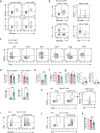


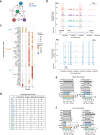

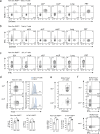
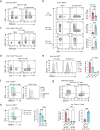


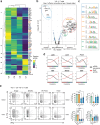


References
-
- Hayday A. C. gammadelta T Cell Update: Adaptate Orchestrators of Immune Surveillance. J Immunol 203, 311–320 (2019). - PubMed
Publication types
Grants and funding
LinkOut - more resources
Full Text Sources
Research Materials
